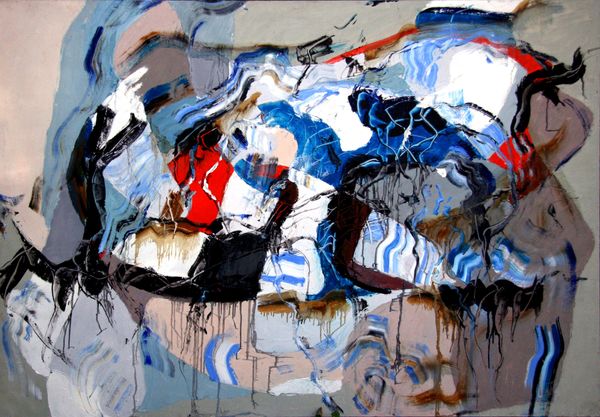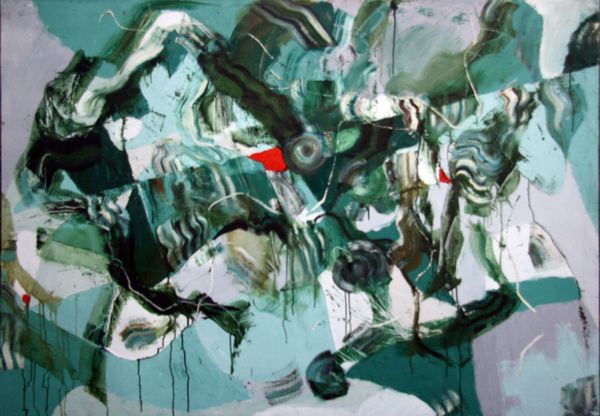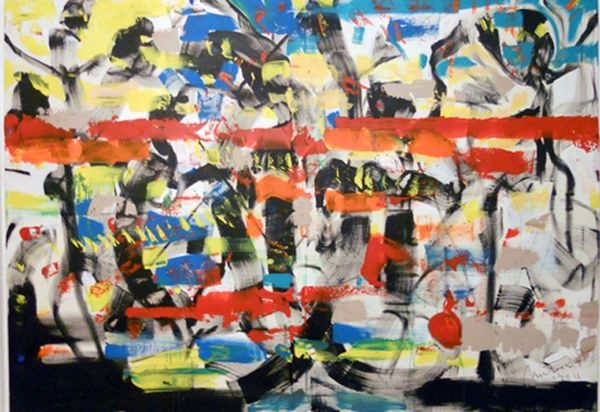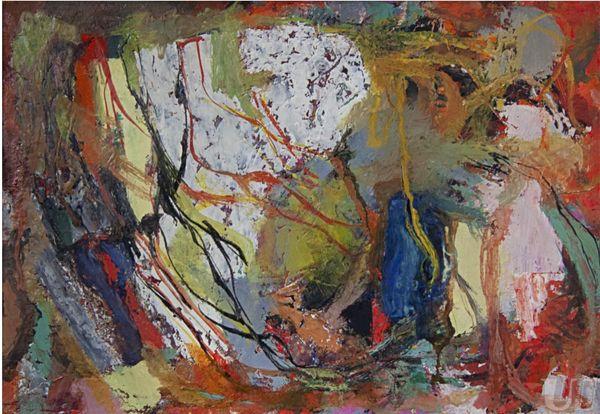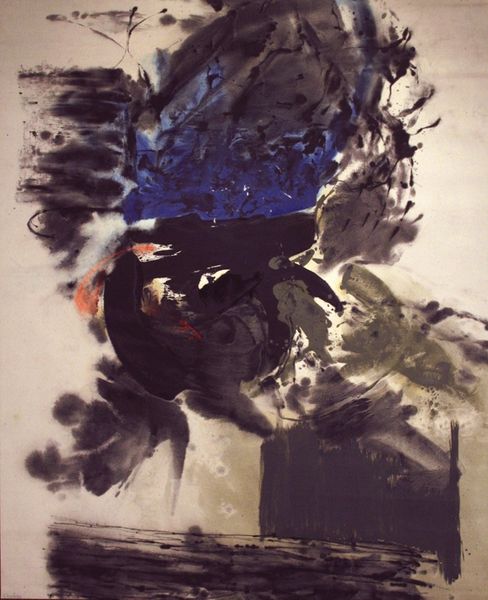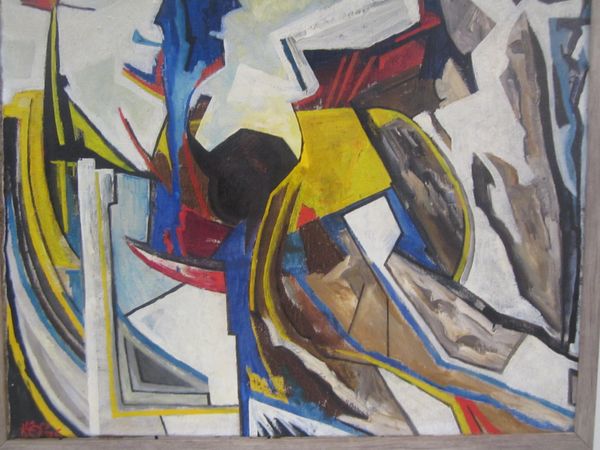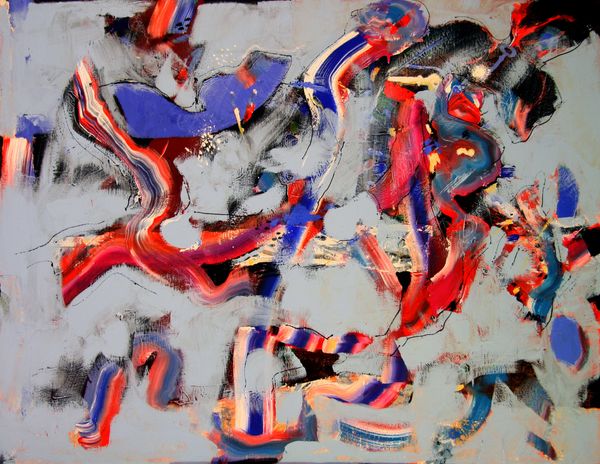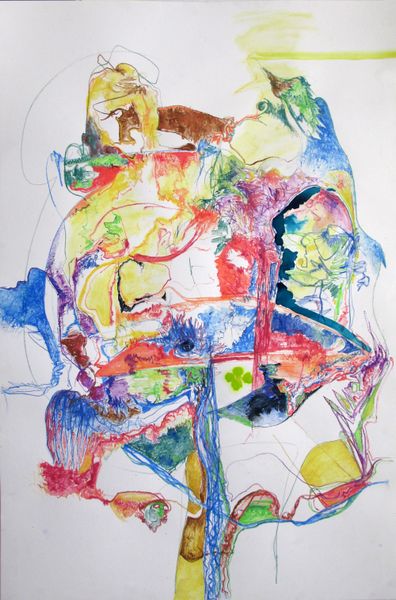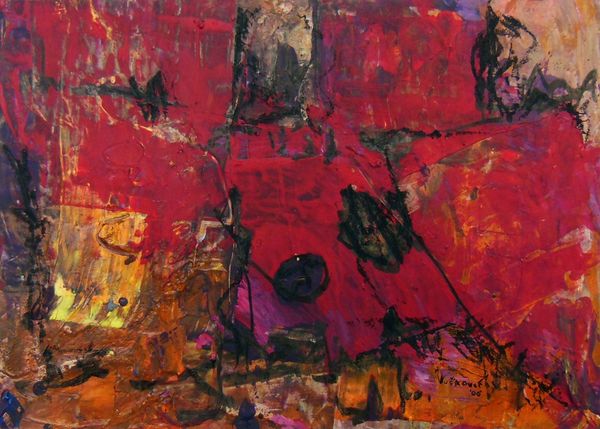
painting, acrylic-paint
#
abstract-expressionism
#
abstract painting
#
painting
#
acrylic-paint
#
acrylic on canvas
#
abstraction
Copyright: Friedel Dzubas,Fair Use
Curator: Before us, we have a work titled "Untitled" by Friedel Dzubas, crafted in 1959 using acrylic on canvas. Editor: My immediate impression is… unsettled. There’s a distinct push and pull happening between the aggressive reds and murky greens against the softer washes. It creates a dynamic tension, wouldn’t you agree? Curator: Absolutely. I see echoes of ritualistic marking and even the subconscious attempts to represent primal stories, you know? That scarlet slash might speak of sacrifice or a burst of untamed life. Editor: Interesting. I'm drawn more to the artist's manipulation of the medium. Observe how Dzubas lets the paint both bleed and coagulate. It's as if he’s controlling chance, isn't it, coaxing intention out of apparent randomness. The composition, although abstract, maintains a powerful equilibrium. Curator: The choice of color is important, too. Consider the interplay of bright yellows and soft blues against the dominant reds and greens. These contrasting colors may suggest themes of balance and discord, hope and fear—binary forces so deeply rooted in our collective memory. Editor: Precisely. Color as form, dictating our eye’s journey across the canvas, revealing depth through the sheer act of chromatic relationships, wouldn’t you agree? There isn't any clear figure/ground relationship. We perceive flatness that at once gives way to depth because the areas are optically and formally related to each other. Curator: Well, in abstract expressionism it's possible, maybe. Each viewer carries their cultural baggage to their observation. In some cultures, certain colors bear specific weight, reflecting shared experiences. The crimson could be valor in one setting, and wrath in another. Editor: Undoubtedly. So, from my view, through careful brushwork and formal consideration of color relationships Dzubas opens a doorway for a complex exploration of both artistic intention and perhaps our own preconceived ideas. Curator: I think both observations are more alike than they are apart. Through the vocabulary of colors and forms, Friedel Dzubas perhaps opens channels to primal ideas residing in both the personal and the cultural.
Comments
No comments
Be the first to comment and join the conversation on the ultimate creative platform.
